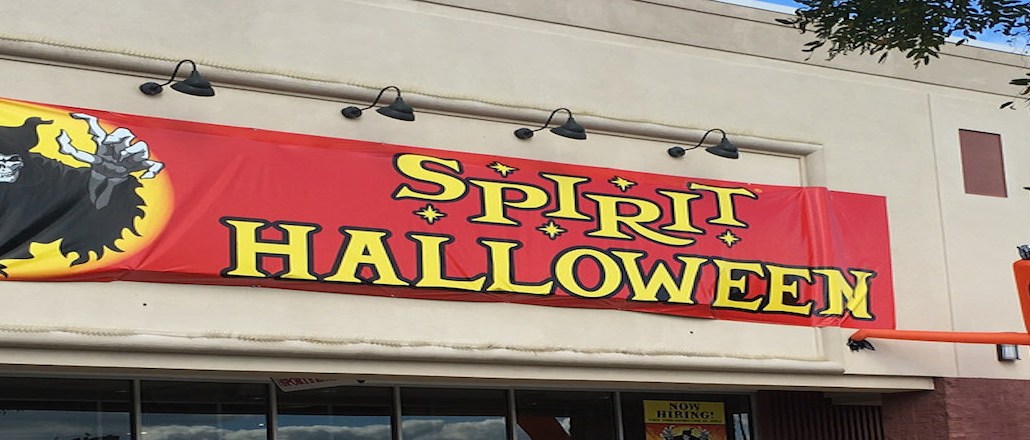Halloween stores are opening more pop-ups as temporary retail goes mainstream

As pop-up retail stores become par for the course for year-round brands, seasonal Halloween stores are scaling up.
Spirit Halloween has opened its most pop-up stores ever this Halloween season: more than 1,300, which have been open for eight to 10 weeks, leading up to the holiday. In New York, Spirit opened up a pop-up in the Empire State building, where rents are sky-high. Even if the costume merchandiser takes a hit on the location, the visibility it brings may be akin to advertising dollars spent elsewhere. Party City, which has more than 900 permanent stores, opened around 250 “Halloween City” pop-up stores this season, according to Vox, capitalizing on the growing number of empty retail spaces. They’ve appeared inside former Toys ‘R’ Us locations, Kohl’s stores and even restaurants gutted of their appliances.
The retailers are following a pop-up trend popularized by direct-to-consumer brands, such as the mattress-maker Casper and the beauty brand Birchbox, which have begun testing the offline waters to scale growth beyond what they can online. Though Halloween stores have been ahead of the pop-up curve, because they’ve always been temporary, the entrance of DTC brands into the pop-up space has increased competition for available locations, as well as heightened expectations around what these limited-time store entail.
Erin Springer, a Spirit spokeswoman, said that “being a seasonal store has its advantages and disadvantages” from a real estate perspective. Spirit has an in-house team that locates and negotiates leases on its pop-up stores, an ambitious effort that requires fine-tuning and finding new locations each year.
“As the economy continues to improve, retailers are beginning to expand their portfolios and vacant spaces are beginning to backfill,” said Springer. “We do face challenges securing the best locations.”
Even with this year poised to be the second-largest Halloween — with Americans expected to spend $9 billion, slightly down from last year’s record $9.1 billion, according to The National Retail Federation — Spirit and Party City also face competition from online competitors like Amazon. Both companies sell online, but the majority of their revenue comes from their stores.
Checkouts are higher when customers pop into a store to buy one thing and buy a bunch of other things too, said analysts.
To drive customers into the store, retailers are customizing individuals locations with certain themes, and they’re also offering the standard kinds of sales and discounts that have long been staples. Though Party City operates year-round, Halloween is one of its biggest drivers of revenue, according to people familiar with the company (Party City doesn’t break out specific Halloween revenue). It’s exploring outfitting certain stores with experiential themes, such as riffs of the popular horror show “Stranger Things.”
Marty Brochstein, senior vp at the International Licensing Industry Merchandisers’ Association (LIMA), said in general, retailers are ramping up their budgets to make the shopping experience more immersive for the buyer, and that’s no different for Halloween retailers, who only have a short period of time to get customers’ attention.
“All the brick-and-mortar guys are trying to figure out how to leverage the space that they have to more effectively get (consumers) away from their computers and get them into experiential shopping,” said Brochstein.
Rubie’s, a Halloween costumer licenser and retailer, is upgrading its in-store displays around themes, like Nightmare on Elm Street and Jurassic Park, to drive customers in.
“It’s a matter of making a visit to a store a unique experience that you’re not going to get online and having you interact with merchandise and having you look forward to the trip to the store,” said Howard Beige, EVP at Rubie’s, a licenser of Halloween costumes and the owner of three retail shops in the New York area.
Subscribe to the Digiday Retail Briefing: A weekly email with news, analysis and research covering the modernization of retail and e-commerce.
More in Marketing

Why the New York Times is forging connections with gamers as it diversifies its audience
The New York Times is not becoming a gaming company. But as it continues to diversify its editorial offerings for the digital era, the Times has embraced puzzle gamers as one of its core captive audiences, and it is taking ample advantage of its advantageous positioning in the space in 2024.

Why B2B marketers are advertising more like consumer brands to break through a crowded marketplace
Today’s marketing landscape is more fragmented than ever. Like consumer brands, business brands are looking to stand out in a crowded and competitive marketplace, making marketing tactics like streaming ads, influencers and humorous spots more appealing.

As draft puts WNBA in spotlight, the NBA is speeding up ballplayers’ transition to creators
The NBA’s star athletes are its greatest marketing asset.





